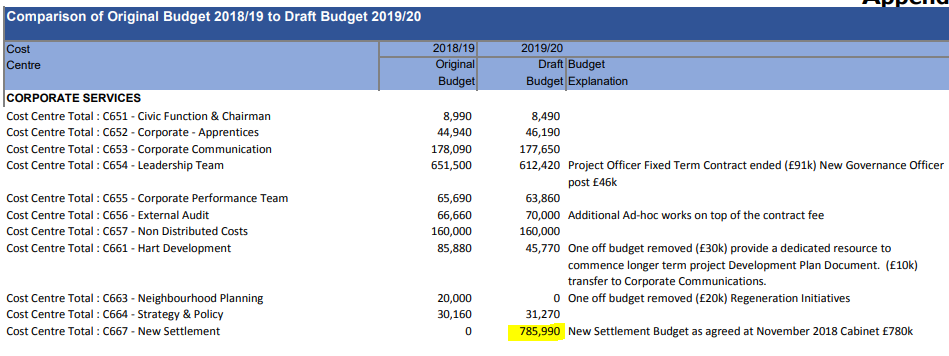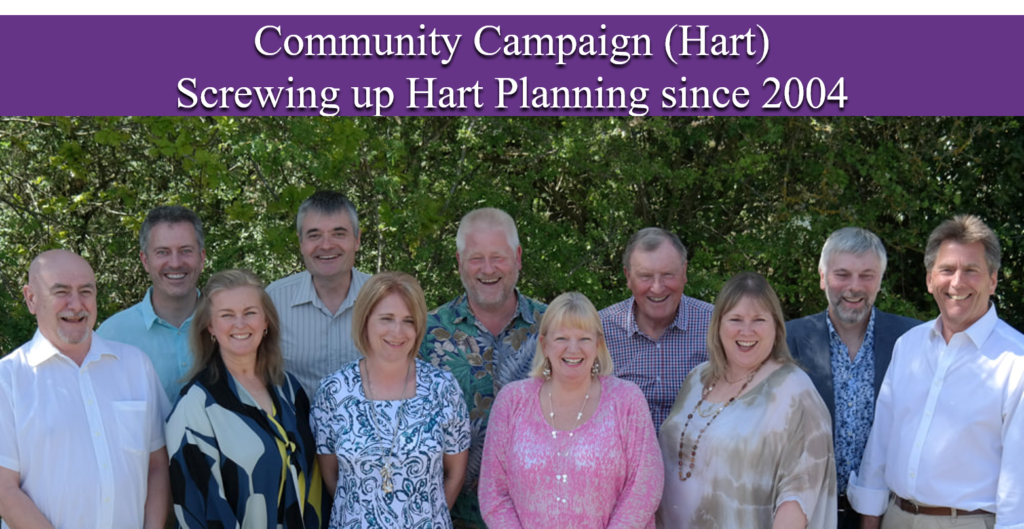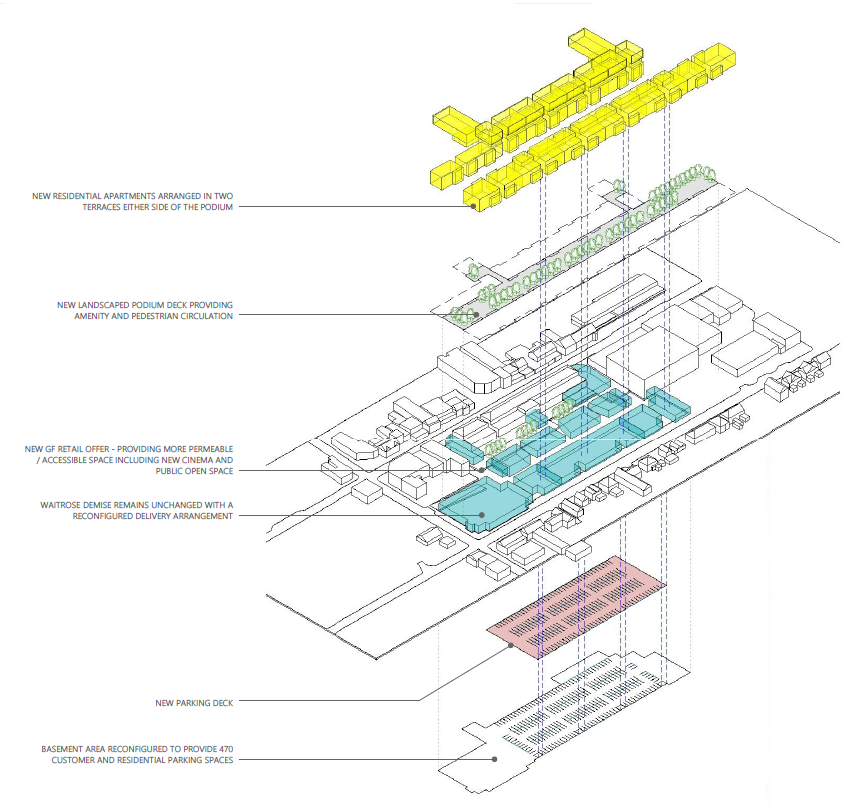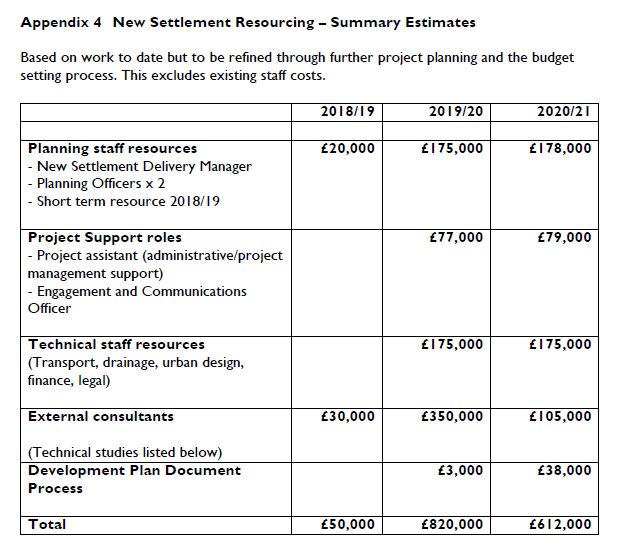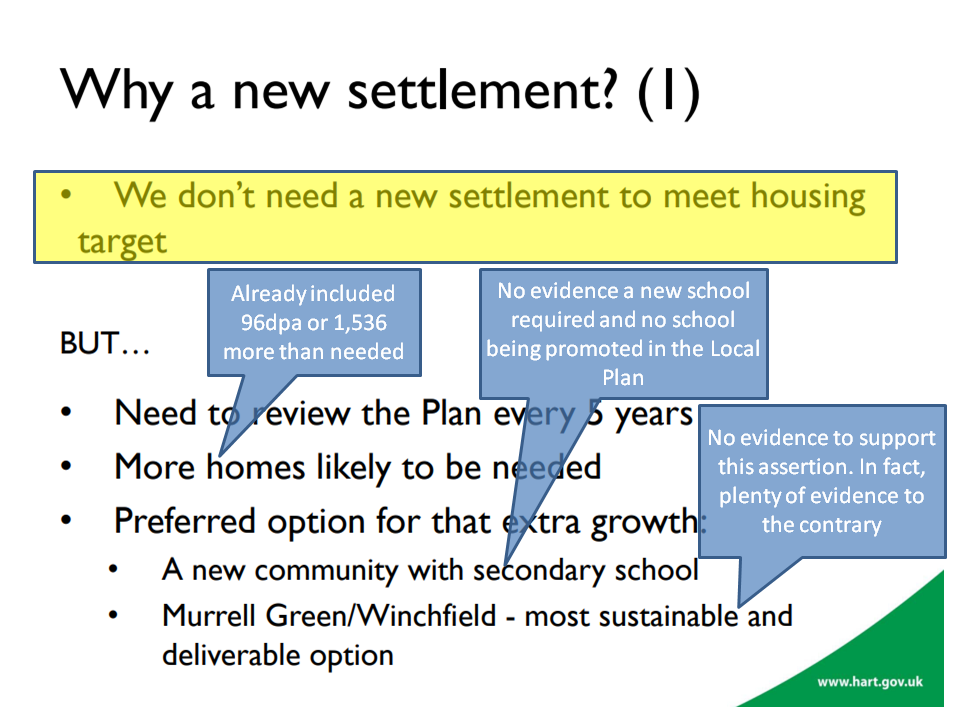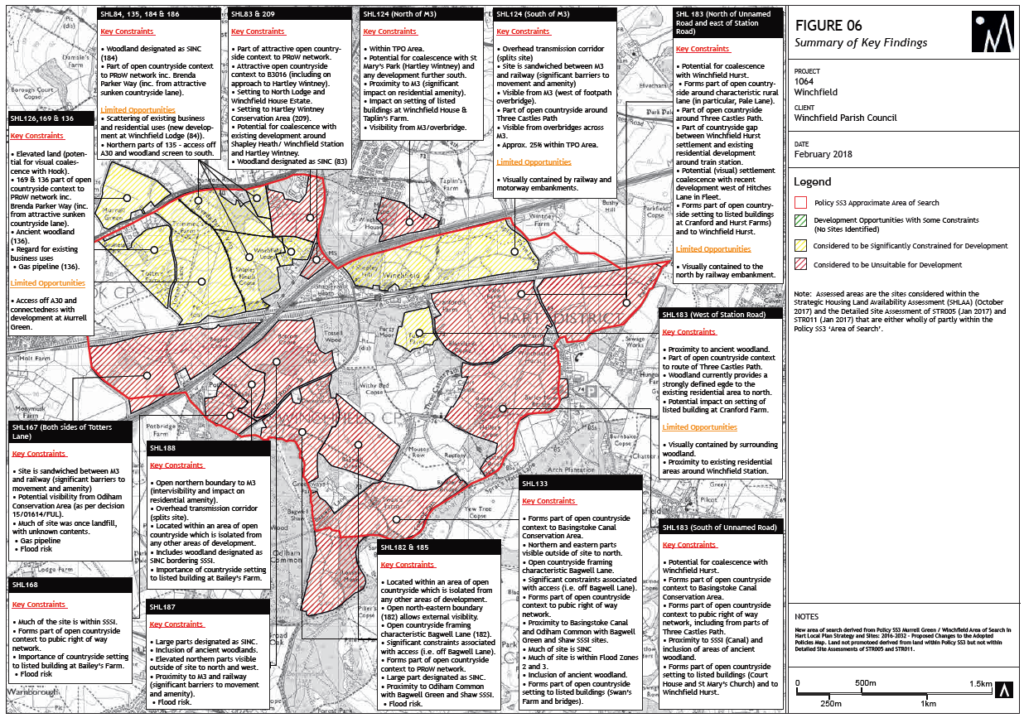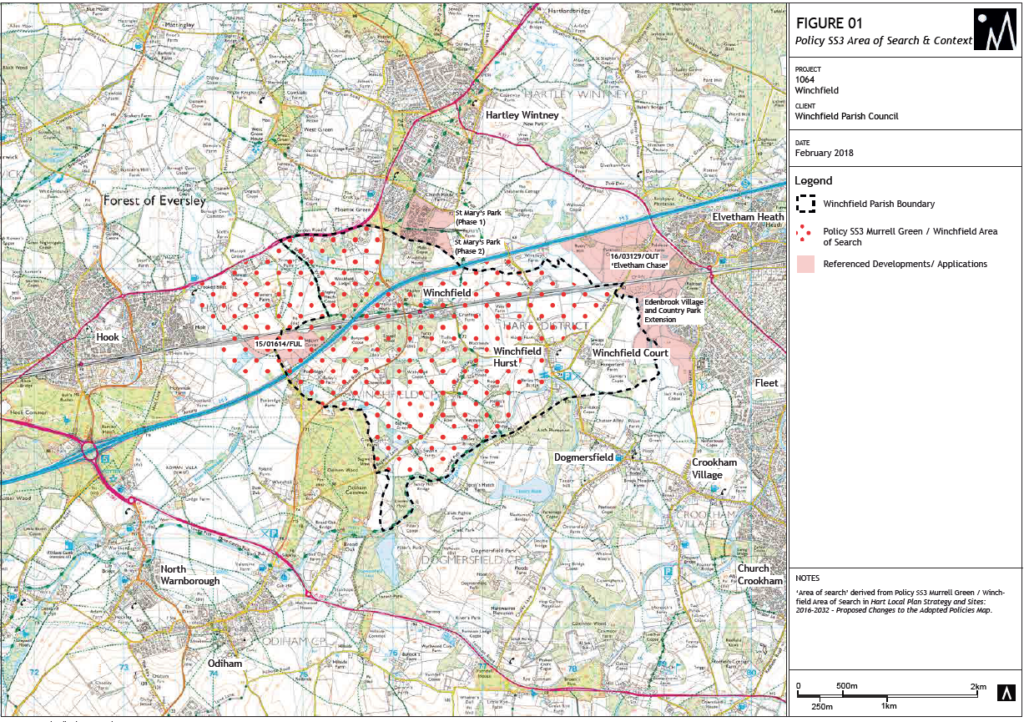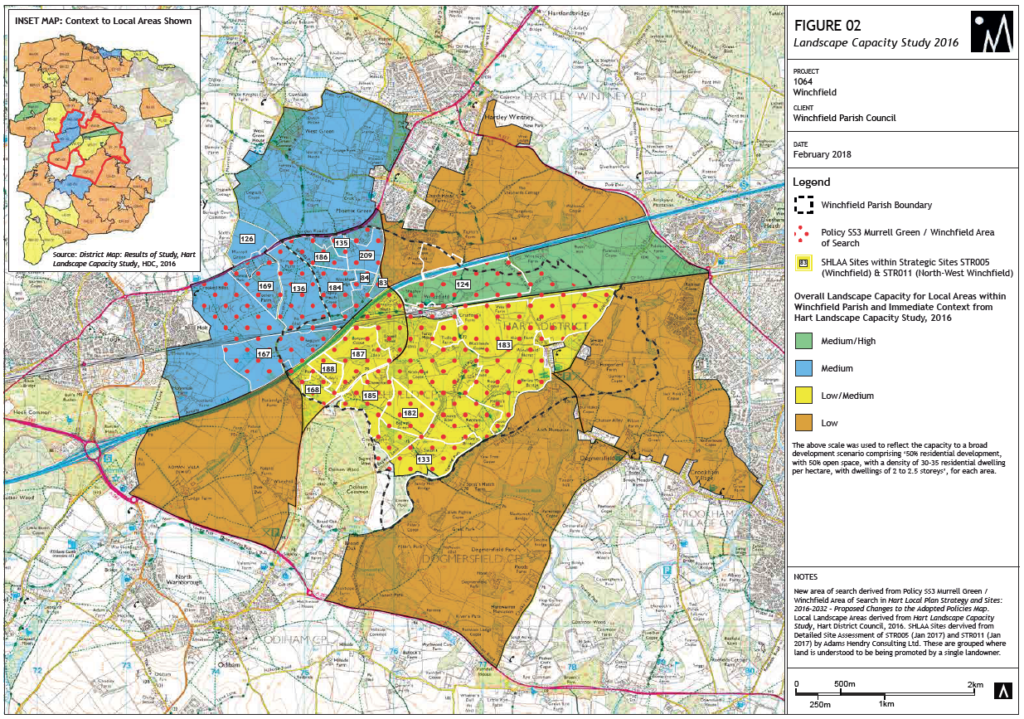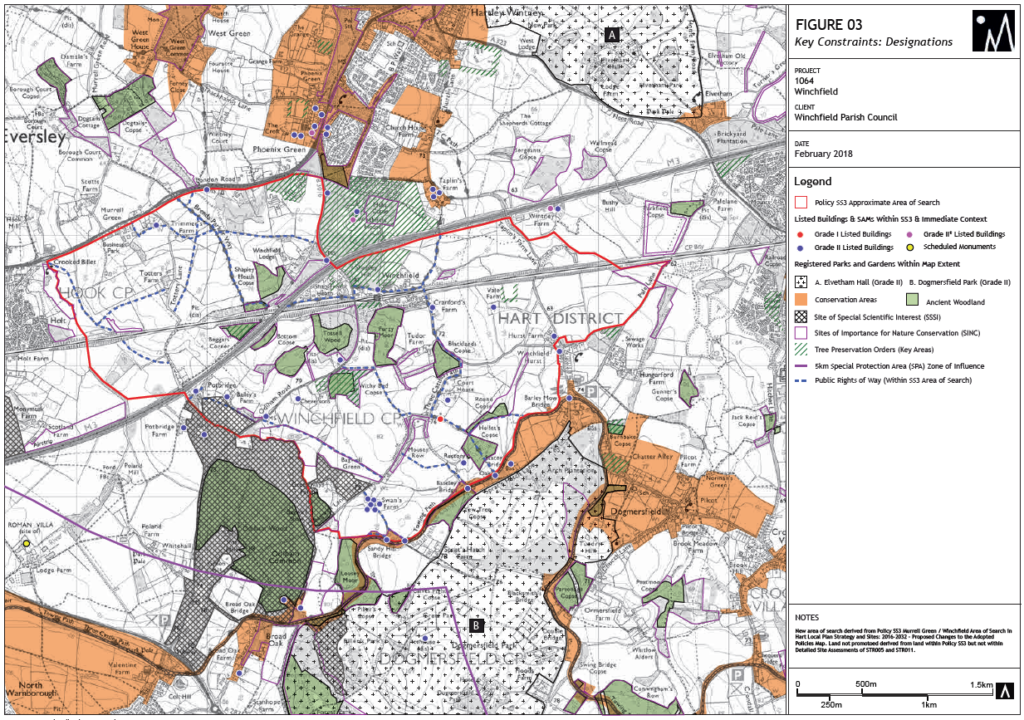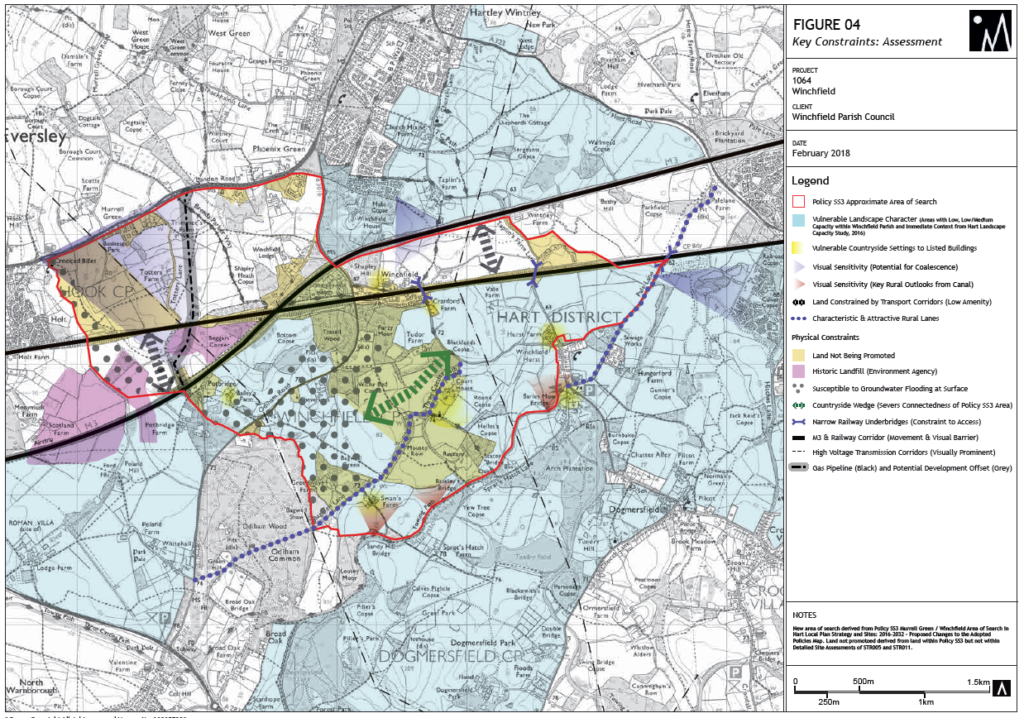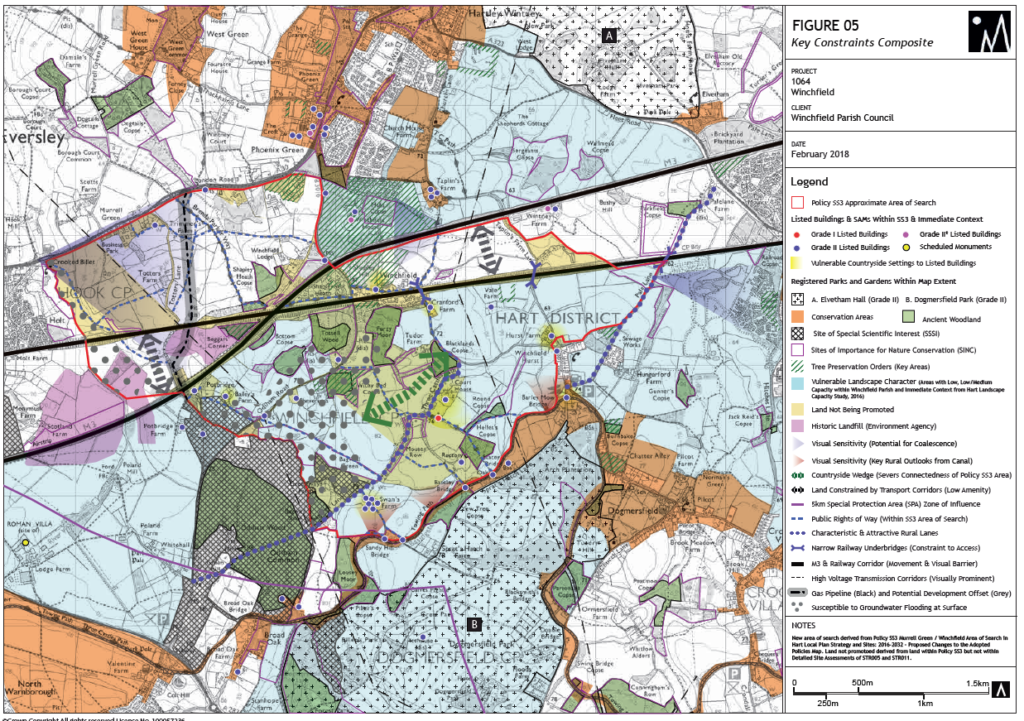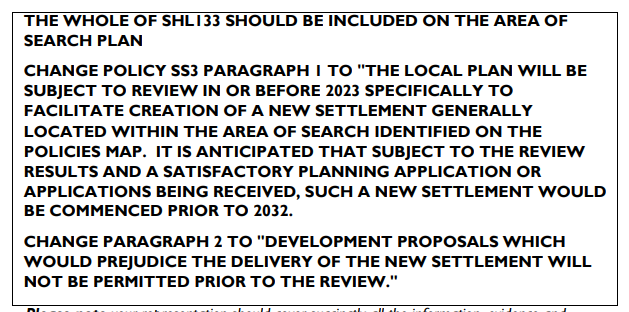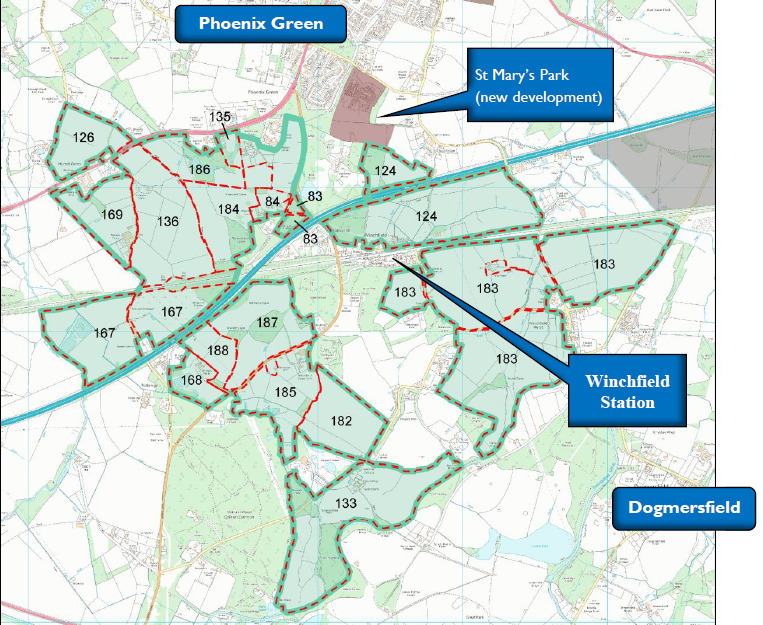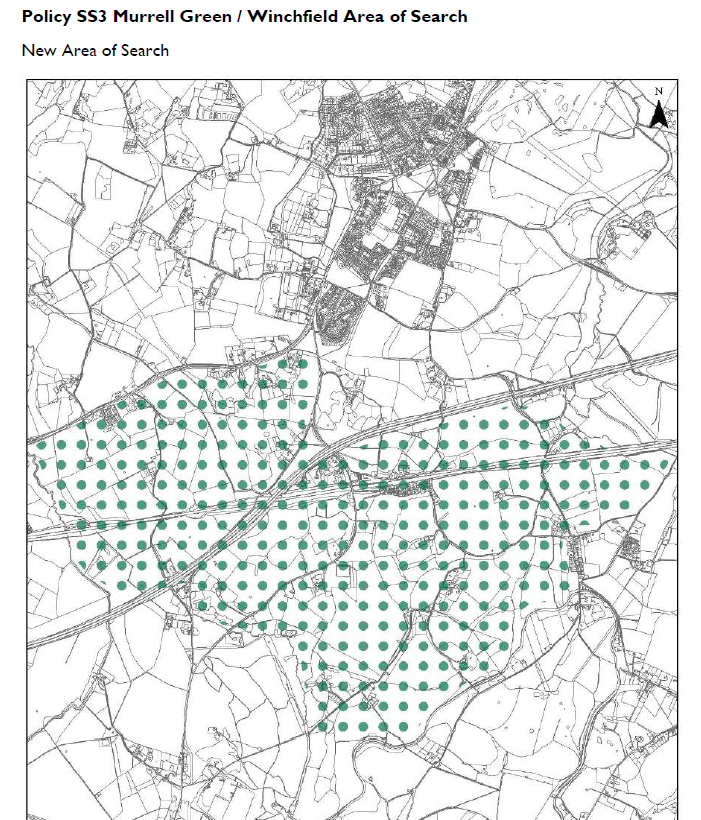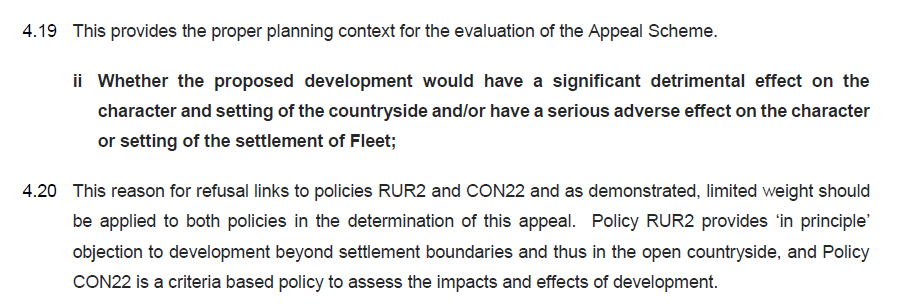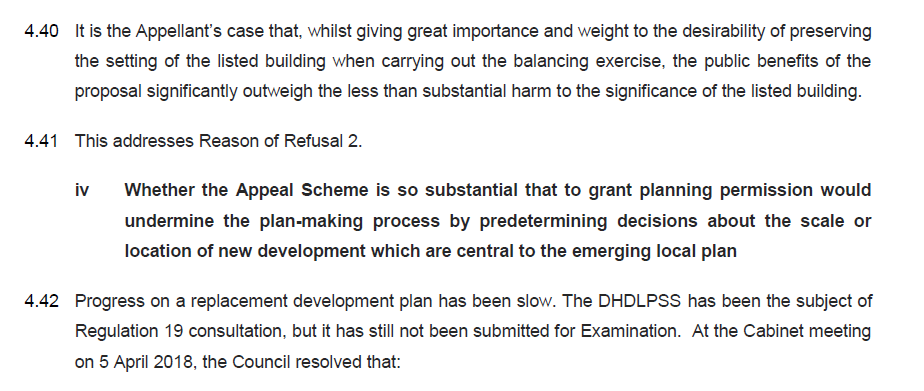As regular readers will recall, the Council announced the preliminary results of the Hart Local Plan Examination a couple of days ago. We have now had time to read the detailed letter from the Inspector and form some conclusions.
The purpose of this post is to summarise the Inspector’s preliminary findings and suggest our own next steps for the Local Plan. In short, the Inspector’s report is damning and heads must roll.
Summary of Local Plan Examination Preliminary findings
First, the Council’s characterisation of “a couple of issues in relation to the Local Plan” understates the ferocity of the Inspector’s criticisms by quite some margin. The Inspector’s full report can be found here.
His criticisms of Policy SS3 and the area of search for the new settlement are deep and comprehensive. He says:
I have a number of fundamental concerns with regard to the soundness of Policy SS3.
He lays out concerns about infrastructure, saying the plans lack substance. He also points out there’s a large tract of land in the middle of the Area of Search is not and will not be available. But he reserves his most scathing attack for the Sustainability Appraisal (SA). Even though there were concerns raised about the legal compliance of the document, these don’t matter, because the document itself was so bad.
Far from being a “couple of issues”, these criticisms explode a cruise missile right at the heart of the Council’s flagship policy.
The criticism of the SA is damning. Hart submitted two sustainability appraisals, one before submission and one after. Of the first, the Inspector says:
I am not of the view that the pre-submission SA, in its own right, appropriately or robustly considers reasonable alternatives to a new settlement as a long-term growth strategy
The second SA did test reasonable alternatives, but inappropriately. The Inspector cites several examples:
- The ranking of Option 1b (the new settlement) “as the best performing under heritage is not justified”.
- For land and other resources, the ranking of Option 1b “is also therefore not, in my view, robust”.
- The Inspector decided that “the decision not to rank the options in terms of flood risk to be very questionable”.
- On landscape issues the Inspector concluded:
Option 1b was ranked joint highest with Option 1a. However, it is unclear why this is the case, given that the proposed new settlement would result in the development of large areas of open countryside and Option 1a already benefits from planning permission and is largely previously developed land. Further, the post submission SA notes that Pale Lane is ‘relatively unconstrained’, but despite this and it being a smaller site / potential development, Option 3a is ranked lower than Option 1b.
- The Inspector has this to say on the climate change ranking:
Option 1b has been ranked the highest under the category climate change. This is as a result of the potential for the proposed new settlement to deliver a district heating system. However, there is little evidence to suggest that this is a feasible or realistic option that is being actively pursued by the site promoters. I consider this raises doubt about the appropriateness of such a ranking.
- The ranking for the impact on water was also criticised by the Inspector.
- In conclusion on the SA the Inspector said:
In my judgement the scoring of Option 1b above or equal to other options is not justified by the evidence. As a result, I consider that Policy SS3 and its supporting text are not justified, as, on the currently available evidence, it cannot be determined that it represents the most appropriate long-term growth strategy.
I consider that the post submission SA is therefore not robust and should not be relied upon in support of the Plan.
In addition, the Inspector clearly states:
Given my earlier findings in terms of the housing requirement, Policy SS3 is not required for the Plan to be sound and, in light of my comments above, I consider that the most appropriate course of action would be to remove it (along with any other necessary subsequent changes) from the Plan through Main Modifications (MMs). This would allow the Plan to progress towards adoption without any significant delay to the examination process.
Substantially all of these points were made by We Heart Hart and Winchfield Parish Council during the consultation process. So, all the issues were known to Hart Council before submitting the plan for examination, yet they chose to press on with the doomed policy. In effect, the Council has been caught red-handed trying to gerrymander the SA in what looks to us like a clear case of policy-based evidence making.
It is true that the Inspector has left open the door for the new town to return in future. But this is conditional upon the new town being considered properly alongside all other options for long term growth beyond 2032.
I consider that it would not be unsound for the Plan to retain the Council’s aspirations to plan for long-term needs beyond the Plan period, which could include the delivery of a new settlement. But, the Plan should clearly state that this, as a growth option, would need to be fully considered and evidenced in a future (potentially early or immediate) review of the Plan or a subsequent DPD.
I am of the view that a significant level of further supporting work would be required for Policy SS3 to be found sound in its current form, which would need to include appropriate and proportionate area/site assessments, infrastructure considerations, viability testing, evidence in support of deliverability and further SA work, which would need to be done in an impartial manner with sufficient evidence to support its findings and comparisons with alternative options.
[Update 5/3/2018] But there is a significant caveat from the Inspector:
I am also mindful that following further work, there can be no guarantee that the evidence would support it as the most appropriate long-term growth strategy or that Policy SS3 would be found sound.
[/Update]
Budget Impact of New Town Planning
In addition to the hundreds of thousands (if not millions) of pounds already spent, we should also note that in the same Council meeting, they agreed to spend £785,990 on the new settlement in the next financial year (Paper B Appendix 3). Residents might reflect on the other important services that might be delivered with this money, like free-parking in Fleet to boost retail footfall.
In summary, we have a Council that has botched its flagship policy, had it found unsound but is proposing to squander even more of our hard-earned council tax on the same failed policy.
Next Steps after the Local Plan Examination
The first and most obvious point is that we need to get the Local Plan over the line as soon as possible. This means that the Council should abandon Policy SS3 immediately and agree to take Surrey Heath’s unmet need. They should reply to the Inspector forthwith, agreeing to his demands and get on with changing the plan to make it sound.
This is necessary to protect Pale Lane and Owens Farm in Hook and any other planning appeals that might come along.
Before any further review of the plan to identify and evaluate properly the options for long term growth beyond the plan period, root and branch reform is required.
Root and Branch Reform – Heads Must Roll
Let’s take a look at what is required. First, let’s look at the members.
Liberal Democrats
The Portfolio Head for Planning, Graham Cockarill and the Council Leader, David Neighbour have allowed themselves to be the puppets of Community Campaign Completely Concrete Hart (CCH). They have preened themselves in positions of power whilst presiding over the car-crash that is Policy SS3. They have wasted hundreds of thousands of pounds, wasted precious time and put at risk more of our green fields. Trying to position the Inspector’s report as a success with only a couple of minor issues to resolve, simply will not wash.
They have lost all credibility and authority and should immediately resign their Cabinet positions and consider whether they should continue in their role as Councillors. Hopefully, their Yateley electors will see through their ineptitude and bring down the guillotine on their political careers.
Community Campaign Hart
Then we have the puppeteers in CCH. The main protagonists are James Radley and Alan Oliver. Their track record is woeful. The then ruling Conservatives (who are far from blameless in this affair) had a draft Local Plan, without the new town, in late-2016. CCH scuppered that plan by insisting that a new option to include the new town be included. This was even though surprise, surprise, Winchfield had failed testing due to concerns about flooding and lack of infrastructure. This delayed the Local Plan, put Pale Lane and Bramshill at risk and wasted even more money.
They persisted with the lost cause appeal against Grove Farm/Netherhouse Copse, wasting probably over £100,000. Our questions to Council have been censored because they found them uncomfortable (see here and here). They have dismissed We Heart Hart’s concerns, that have now been proven to be right, as “Trump-like diatribes”, “misinformation and outright lies”. They said in Fleet News that they would deliver an “infrastructure-led” Local Plan, yet the plan contains only threadbare infrastructure proposals, with big gaps in costing and funding. Moreover, the Inspector has dismissed the new town partly on the grounds that infrastructure plans lacked substance.
CCH have obstructed brownfield development and won’t even consider urban regeneration seriously. Their pig-headed delusion has resulted in the new town plans being shredded in public by the Inspector. CCH have been revealed as an empty vessel that makes a lot of noise but has no substance. They should immediately resign their Cabinet positions and consider their positions as Councillors. Even Church Crookham electors might begin to recognise the pattern of failure and remove them at the ballot box.
Hart Council Officers
We cannot ignore the role of the officers in this fiasco. In 2012, they recognised that a new town at Winchfield would require new studies, more land, infrastructure assessment and testing. Seven years on, and all that work has either not been completed or failed. We should remember that their 2013 Local Plan failed at Inspection. They too have pursued inappropriate appeals that were doomed to failure. In 2015, they said that there was capacity for only 450 dwellings on brownfield land. Since then permission has been granted for thousands of homes at Hartland Park, Sun Park and many office conversions. Their estimate was out by a factor of at least 5.
They admitted at the Examination that they have been working with the developers on the new town plan for over four years. Now they have been caught out gerrymandering the SA. All this wasted time and money has resulted in their flagship policy ending in abject failure. One must question their judgement, independence and ability to offer sound advice to members and residents.
It is time for a complete replacement of the Planning Team, starting at the top with the joint-Chief Executive.
It is only after getting rid of the dysfunctional Cabinet and the failed Planning team that we can start to plan properly for the future beyond the plan period with fresh ideas. This should include a proper assessment of the regeneration of our urban centres as a much more palatable option than unnecessarily concreting over more of our precious green fields.
